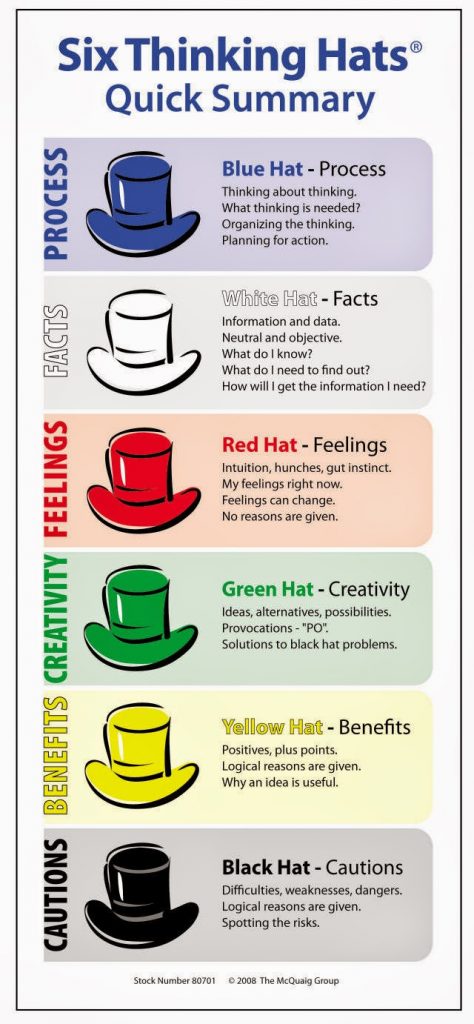Over the last few months we have had to adjust our way of working, living and thinking to an (dare I use that most overused word) unprecedented level. This has of course presented challenges and difficulties, and also opportunities. Sometimes we benefit from a framework to help us along with developing our ideas, so today I offer you Edward De Bono’s Six Thinking Hats.
De Bono is a medic and psychologist most famed for his work on lateral thinking. He is a prolific writer and his creative thinking tools are used around the globe. And in my children’s school, where posters of the six thinking hats are plastered on the walls to remind them to look at different perspectives and to think critically not just reactively.
His model draws on the idea that the wearing of a hat – literal or metaphorical – denotes taking on a particular role and, in this case, a particular way of thinking. The coloured hats signify:

“Thinking is the ultimate human resource…… The main difficulty of thinking is confusion. We try to do too much at once. Emotions, information, logic, hope and creativity all crowd in on us. It’s like juggling with too many balls.”
Edward de Bono
Six Thinking Hats help us to unbundle that thinking. Instead of trying to cover every angle at once, you can focus on each aspect in turn. It’s great to use in a group – try different approaches, with everyone switching between elements of thinking, or each person wearing a different hat. Use it in depth, or speed through each to see what comes to mind quickly. It can be used on your own to brainstorm aspects of an issue, or bounce off another person to map out what you both think. Or use a particular sequence depending on the task in hand.
It provides a language to capture different perspectives and points of view, without personalising – instead of “Jo is always being negative”, it is the black hat thinking which helps you prepare for difficulties; instead of “Tommy being too caught up in detail”, it is white hat thinking which enables you to make robust data-informed choices.
For further reading, the original book is available in the Library, or from the Bookshop. And, of course, you can Google it – lots of ideas will pop up.
Juliet Flynn, Organisational and People Development
 People, Culture and Inclusion
People, Culture and Inclusion Juliet Flynn
Juliet Flynn 144
144


